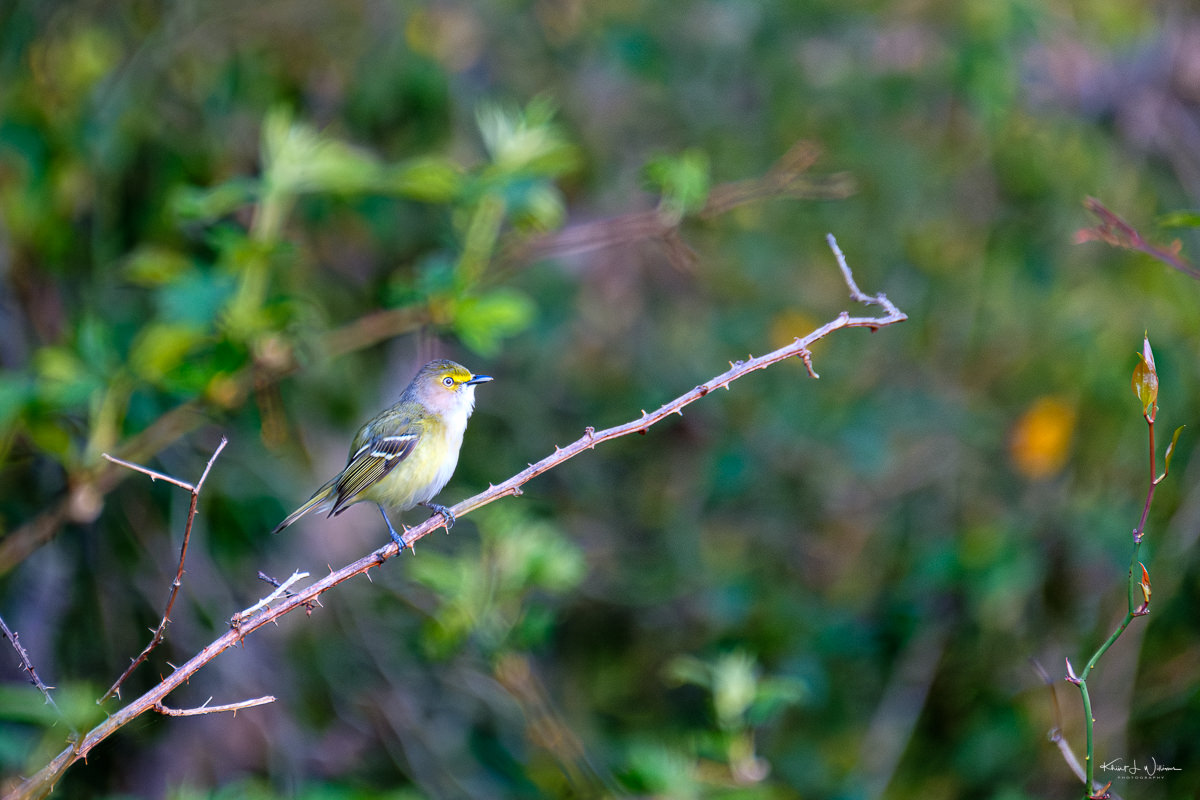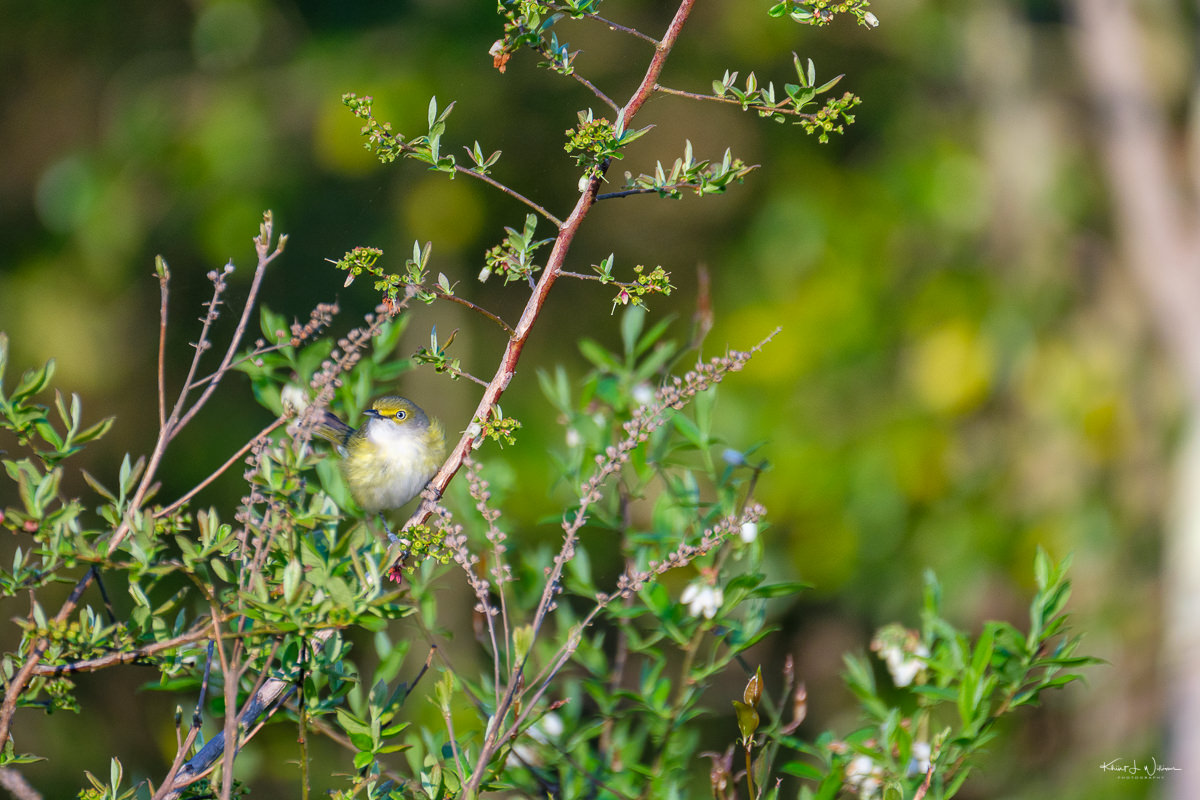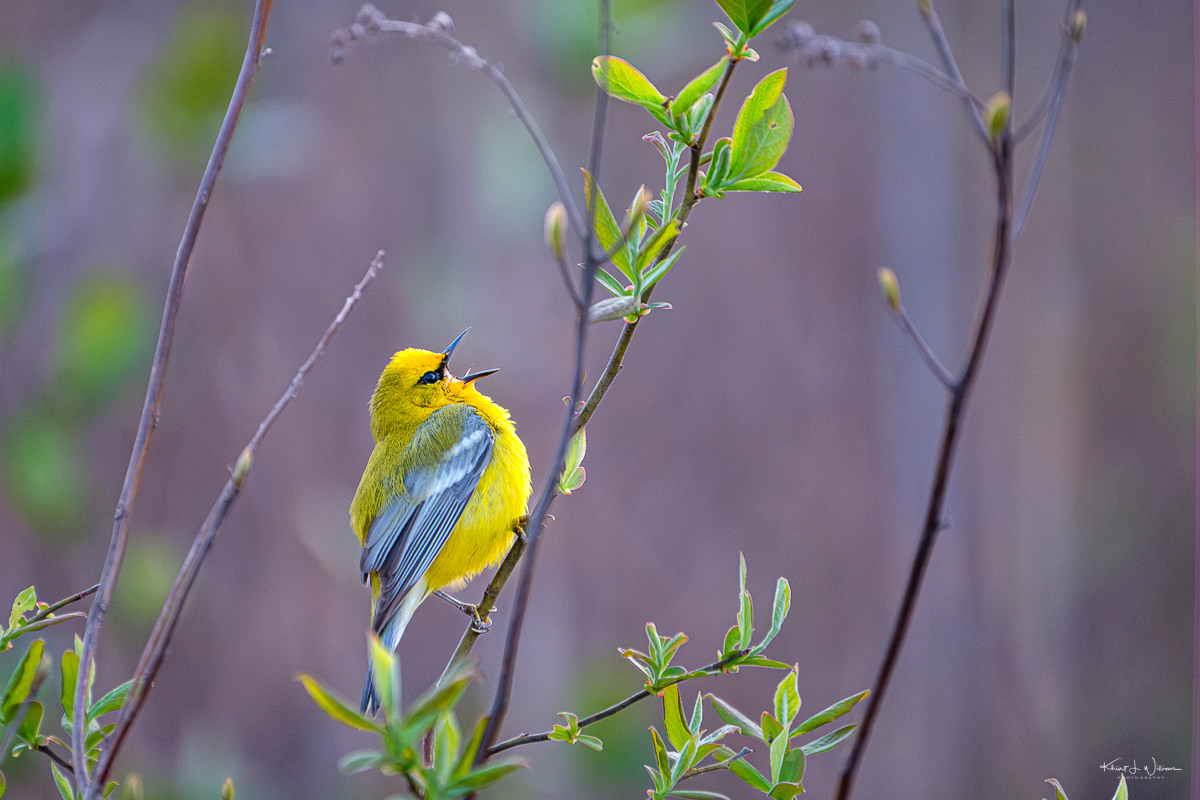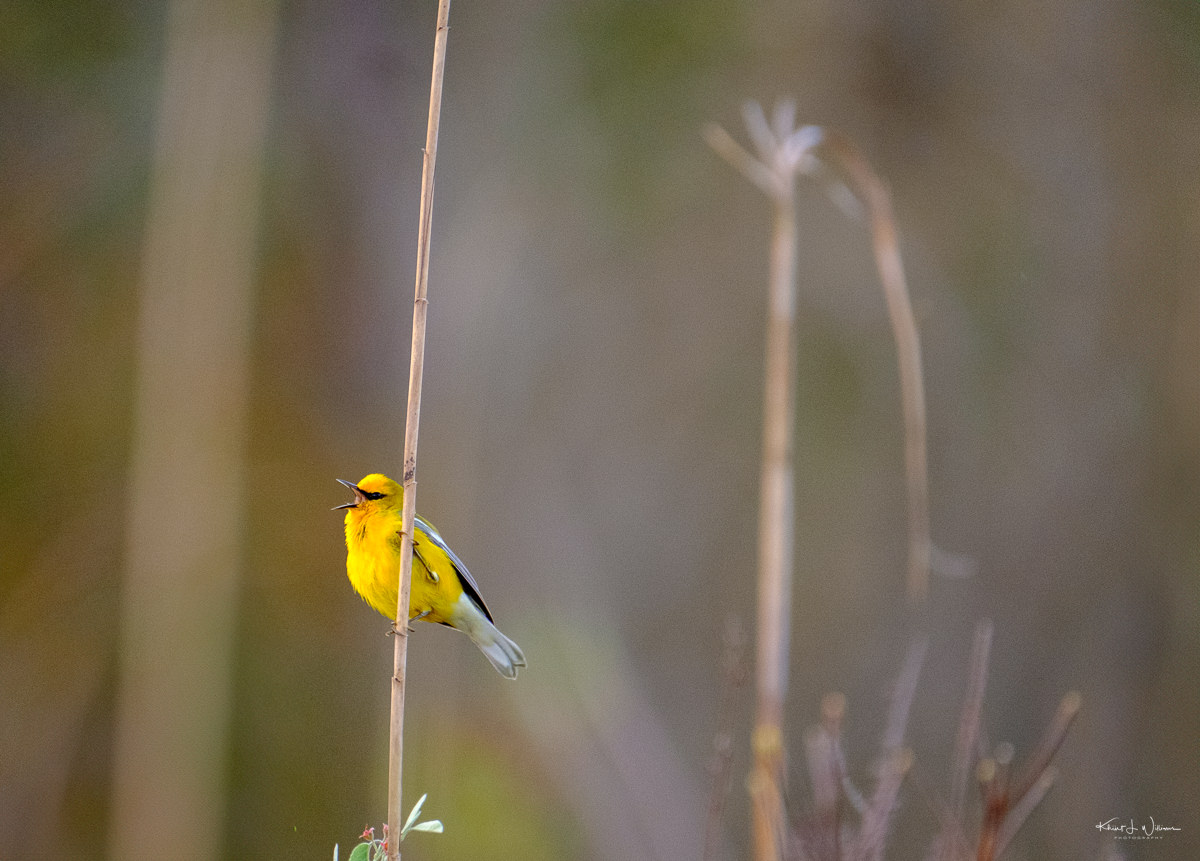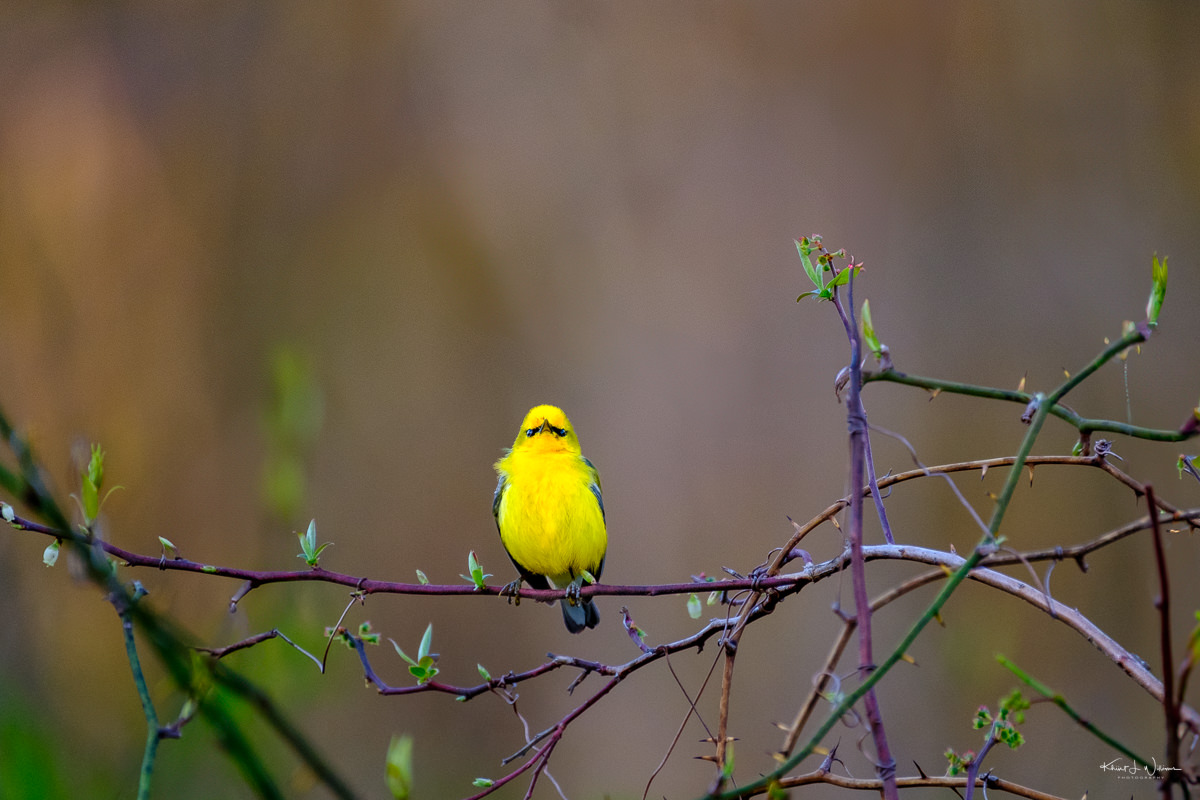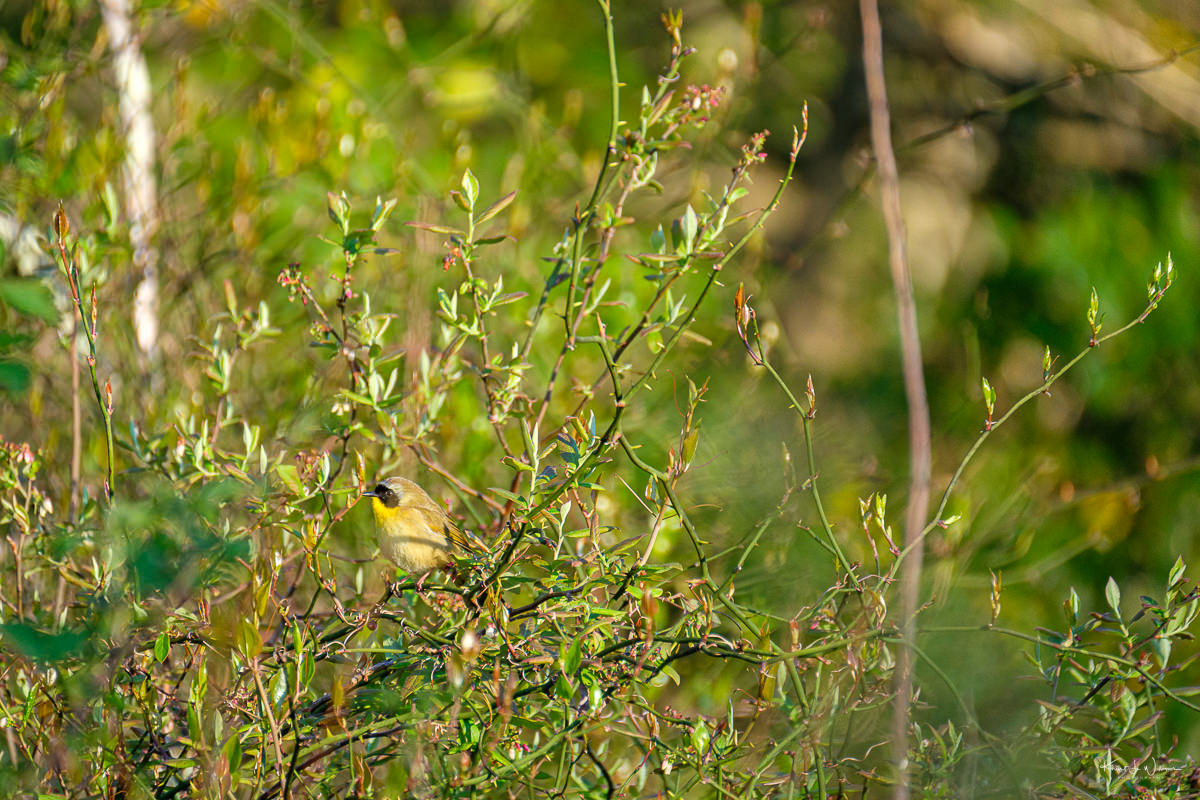I discovered this photograph of the White-Eyed Vireo (Vireo griseus) in the set I took a few weeks ago while on a photography field trip with Ray Hennessey. This morning, via an email exchange, Ray helped me identify this bird.
According to the Audubon Society website, the White-Eyed Vireo is:
A busy bird of the thickets, most common in the southeast. Although the White-eyed Vireo usually stays in dense cover, it is not always hard to see; it will come up to examine and scold a birder who stands near the bushes and makes squeaking sounds. Even when it remains out of sight, its snappy song is distinctive. In Bermuda, where the bird is common, it is widely known as "chick-of-the-village," a good rendition of the song.
I started using the Merlin Bird ID by Cornell Lab by Cornell University app for iPhone which I found via the allaboutbirds website. There is an Android OS version. It correctly identified every bird from the photos I took. How cool is that!!
